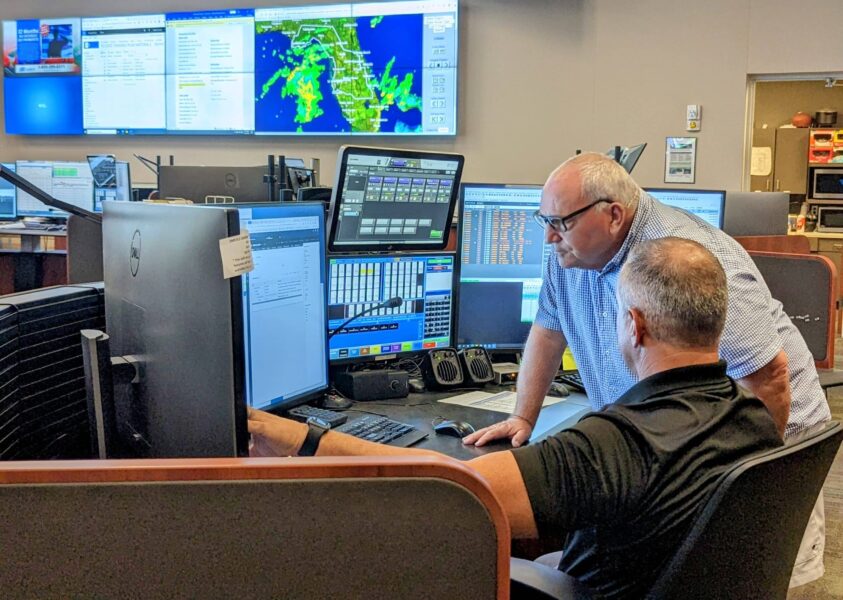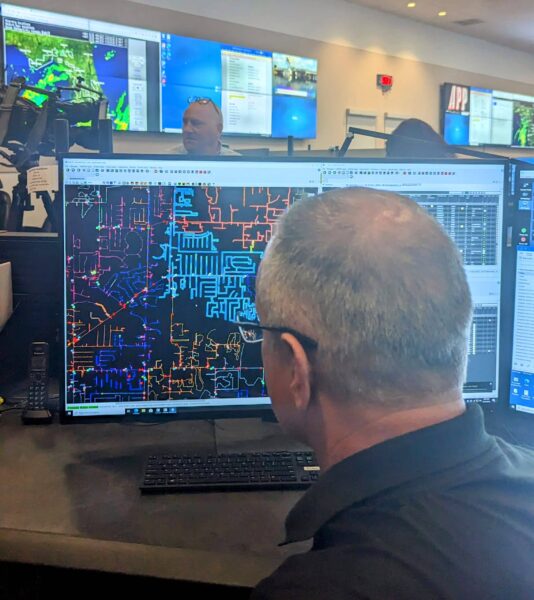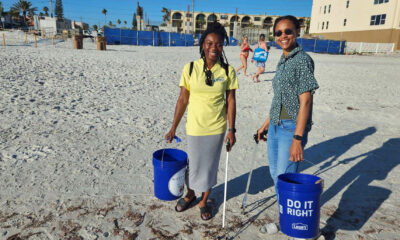Know
Inside Duke Energy’s secretive control center

June 1 marks the start of hurricane season, and workers inside a nondescript St. Petersburg facility are working to ensure 1.9 million customers throughout the state continue receiving 10,500 megawatts of electricity.
Duke Energy Florida officials provided media members rare access to their Distribution Control Center (DCC) Wednesday morning. The centrally located, heavily secured building (address withheld) functions like a government agency’s emergency operations center during storms.
Mark Ward, DCC supervisor, noted 911 dispatchers statewide have a direct line to the facility, and Duke employs its own meteorologists. He said highly trained staffers work rotating 12-hour shifts and conduct a significant “stress test” before June 1.
“During hurricane season, we have a 72, 48, and 24-hour checklist that we all do,” Ward explained. “Nobody can touch the system during that time. And so, what that allows, if there is any fluke or IT (information technology) updates, it’s not affecting our system. We don’t want these systems failing at any minute.”
A tall metal fence with pointed beams surrounds the DCC, and cameras monitor the property. Employees must wait for guards to let them in and out of the only gate and the building.
Once inside, the facility includes showers, kitchens, bunks and anything one might need for an extended stay during dangerous conditions. Ward said the building could withstand a direct hit from a Category 3 hurricane.
Communications specialist Audrey Stasko noted the DCC houses the “behind-the-scenes people that are really working every day to monitor the system and make sure the lights stay on.”

Mark Ward shows the various aspects of Clearwater’s electrical grid.
Duke’s self-healing technology is a prominent aspect of DCC operations. That system automatically detects power outages and reroutes electricity to mitigate extended outages.
The burgeoning technology helped prevent an estimated 513,000 outages and saved over 3.8 million interruption hours last year. Ward noted a breaker issue Wednesday morning in Apopka, outside Orlando, which affected about 500 customers rather than 2,200 due to the self-healing team and platform.
“It absolutely helped during (Hurricane) Ian,” Stasko said. “Not only is it potentially avoiding outages or reducing the amount of time that some of our customers were experiencing that outage, but it also allowed us to free up some of those resources and then send them to areas where they were harder hit.”
She and Ward also noted the benefits provided by Duke’s “smart” meters. Workers inside the DCC can communicate with the tech-enabled devices to discern where a problem originates.
Stasko said the innovative meters provide a “wealth of information” for customers and employees. Ward called the new tech “a game-changer during storms because we can ping transformers, as well.”
He explained that DCC staffers can connect to transformers electronically, which will then “ping” every meter in the area. That allows them to discern if linemen must still respond to a previously reported outage.
“The storm stuff – as far as getting the feeders back on – we were pretty good about getting on,” Ward said. “It was the death by papercuts because we had so many small outages that we were still running to. Now, we ping it, we clear it and we keep the guys focused on getting wire up.”
He noted linemen prioritize restoring power to hospitals, first responders and other critical facilities before focusing on major feeder – or transmission – lines and densely populated areas. Ward compared the process to protecting a person’s heart and arteries instead of worrying about superficial cuts.
Overseeing operations are dozens of skilled employees inside the DCC. Ward relayed that about 70% spent five years becoming linemen before progressing to a supervisory role – and then they must complete a facility-specific training program.
He said the “boots on the ground” experience is paramount to visualizing how the technological systems interact with field equipment. A misstep behind the desk could result in life-threatening consequences on the street.

Duke Energy employs meteorologists and collaborates with first responders across Florida.
There are also security aspects, which underscore the need for an unpublicized address and precautionary measures. Ward called those “absolutely critical” as the DCC controls a 13,000-square-mile power grid from the St. Pete location.
He said Duke officials conduct phishing simulations to test employees and ensure they follow online protocols. They also strictly prohibit using thumb drives, and Ward relayed his fear of plugging any external device into his computer.
“I definitely think the security is needed for this facility,” he added. “Just because it’s the hub. Think about Grand Central Station – this is it for distribution ops in Florida.”







